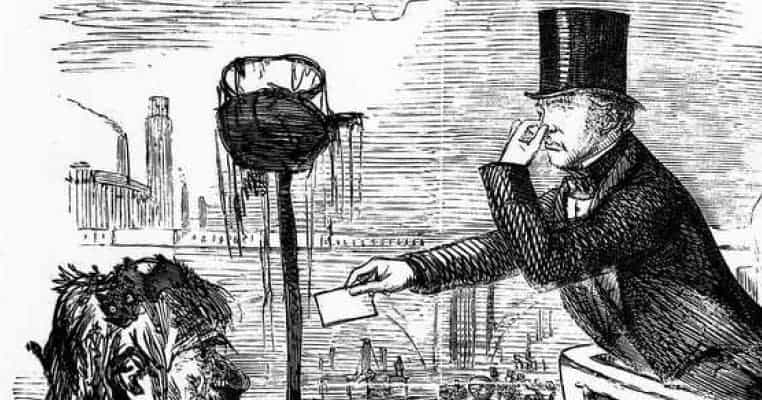In the middle of the 19th century, London was arguably the greatest city in the world. It was the heart of an Empire than spanned the globe. The city was also one of great learning and culture, home to scientists such as Michael Faraday and Charles Darwin, as well as writers like Charles Dickens. It was a city of enormous wealth and opulence, and every year, thousands of new people arrived hoping to find their fortunes.
But running through this great city was the filthiest of rivers. Between the years 1800 and 1850, the population of London more than doubled. And the River Thames became the dumping ground for the almost all of the city’s inhabitants. While poets and writers praised the majesty of the Thames, in reality, it was a putrid river of filth. In 1858, a ‘perfect storm’ of factors combined to cause the ‘Great Stink’. An ‘evil odour’ rose up out of the Thames and spread through the city. Life became unbearable.
To some historians, the Great Stink was one of the most important events in the history of London. While it may well have been wholly unpleasant, it forced the government to act, and act decisively. Here, we present everything you need to know about the Great Stink, from its causes to its consequences:
18. Thanks to London’s rising population and lack of proper infrastructure, the Great Stink of 1858 was a long time coming

The Big Stink was a long time coming. From more than 100 years, London was becoming an increasingly unpleasant city to live in. And the soaring population was the main reason for this. Factories were springing up everywhere, filling their air with dirty smoke. Filthy and dangerous slums were hastily put up to house the poorest of the poor. And through it all ran the River Thames. A far cry from the majestic ‘Old Father Thames’ of poets and writers, by the 1850s it had almost literally been transformed into one giant sewer flowing through the very heart of England’s capital.
The sewers serving London were not up to the job. For the most part, they were small, narrow brick tunnels over the old Fleet and Walbrook rivers. Originally, they were intended to take excess water into the Thames. However, by the 1850s, all manner of things were flowing into the main river, including waste from slaughterhouses and factories. What’s more, accidental drownings and suicides were commonplace in Victorian London, and dead bodies would sometimes remain bobbing and rotting away in the Thames for weeks, even months.

